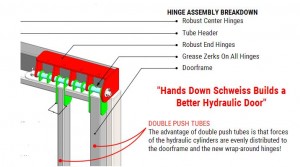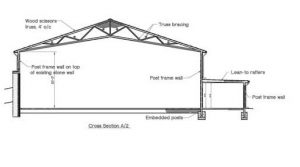R U Paying Attention?
Just this past week, we had one of our clients tell us his nearly completed pole building would require entry (person-type) doors with a R-20 insulating value.
We at Hansen Pole Buildings, violated one of our own cardinal rules – we did not require our client to get the information in writing from the Building Inspector, as well as having the inspector reference the specific portion of the Code (IBC – International Building Code, in this case) which was being cited.
 The insulated commercial steel entry doors we provide are manufactured by Plyco (www.plyco.com) and their 1-3/4” thickness provides an entry door R value of 13 (or a u value of .077). They are a seriously good entry door and tough enough to have Florida Product Approvals against wind loads!
The insulated commercial steel entry doors we provide are manufactured by Plyco (www.plyco.com) and their 1-3/4” thickness provides an entry door R value of 13 (or a u value of .077). They are a seriously good entry door and tough enough to have Florida Product Approvals against wind loads!
Our first call (again, we didn’t line up our ducks to get it in writing) was to Plyco, to ask them about an R-20 rated entry door. Plyco had never heard of such a thing, and for a similarly insulated door to achieve these types of entry door R value ratings, it would need to be somewhere approaching 2-3/4” thick. After calling around and Google searching – we could not come up with such a door.
Next day’s email from our client, “it turns out our Building Inspector slipped a digit (he said 2.0 but meant 0.2) on U-value, and the doors we have, while not labeled as most doors are with an Energy Star certificate, do meet code”
Big difference between 2.0 and 0.2, as well as R and U-values.
So what are these mysterious R and U values terms anyhow?
From Wikipedia.org (otherwise referred to as the ‘sum of all knowledge”): “An R-value is a unit of thermal resistance for a particular material or assembly of materials (such as an insulation panel). The R-value depends on a solid material’s resistance to conductive heat transfer. For loose or porous material, the R-value accounts for convective and radiative heat transfer through the material. However it does not account for the radiative or convective properties of the material’s surface, which may be an important factor for some applications.”
Got it? Baffled?
Getting it simple, R-1 happens to equal the thermal resistance of one inch of either wood chips and other loose-fill wood products or an inch of snow. The term U-value is the inverse of R, therefore U = 1/R.
The true lesson learned here – when a Building Official asks for something, get it in writing!









